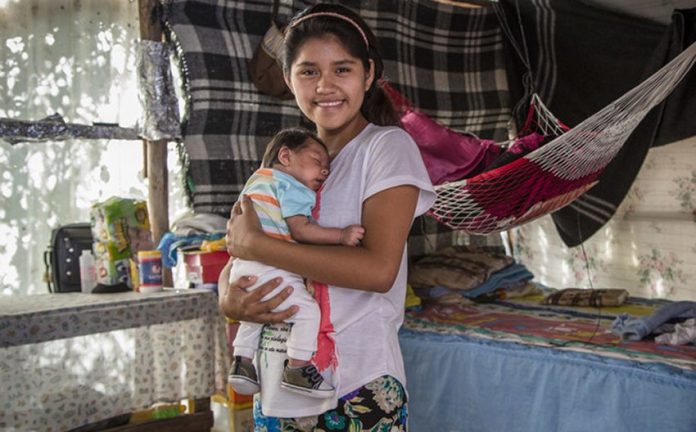Imagine three spectacular waterfalls hidden away in the woods; imagine finding at the bottom of each of them a deep, emerald-green natural swimming pool at just the perfect temperature for cooling off during the hottest days of the year, with plenty of good spots for diving.
On top of that, imagine that the second cascade also includes, at its side, a totally natural waterslide about six meters high.
Well there’s no need for you to book a flight to Bali or Hawaii to visit the paradise you have just imagined. These are just a few of the delightful cascades along the Jalpa river, hidden away in Aquetzalli Canyon, located near the tiny pueblito of Comala, Jalisco, about 85 kilometers southwest of Guadalajara.
These crystal-clear waters are clean and abundant all year round and the high banks alongside the pools provide lots of strategic spots for diving as well as convenient points for anchoring ropes for swinging over the water Tarzan-style. All in all, these cascades really do provide all the fun of a water park, without the plastic.
If you bring along shoes that can get wet, you’ll have no problem crossing the shallow river below the first fall, to reach a rough trail on the other side which takes you to the next two falls upriver (no more than 135 meters).
I should also mention that a short distance downstream you can find several convenient places for picnicking or camping alongside the river, under the shade of tall fig trees where you may see — as did we — a pair of noisy, chattering cuclillos or squirrel cuckoos (piaya cayana) frolicking above you. These gorgeous, long-tailed birds get their name in English from their habit of jumping from branch to branch like squirrels.
“It was well worth it,” said our neighbor Michael Boudey, originally from France. “My children and I fell in love with the place.”
I have friends who love canyoneering, an extreme sport mainly dedicated to rappelling down ice-cold waterfalls. When they discovered those three cascades on the Jalpa river they naturally asked, “How many other falls might there be upstream?”
Well, in time they discovered there were a total of 12 falls through Aquetzalli Canyon, most of them requiring no rope work at all, just a lot of strategic jumping into the convenient pools at the bottom of almost every waterfall.
On one of their visits to the Jalpa River they invited me along. Leaping into cold water all day, however, is not my idea of fun. “I’d love to come along,” I said, “but I will wait for you at the lower falls.”
Here, I figured, I could catch up on my writing in full view of a spectacular cascade with the option to periodically cool off in the pool of my choice. By the way, the word Aquetzalli, I was told, means “crystal-clear water” in Nahuatl.
Canyoneer Chris Lloyd gathered together a group of around 20 people for this event, including several children and newcomers who had never “done” a canyon before.
It took us two hours to drive from Guadalajara to a little bridge over the Jalpa River where the canyoneers would abseil down their first waterfall. I then proceeded by car down to the end point of the river run, the three gorgeous waterfalls of Comala.
It was a Sunday morning and I was amazed to find not a single person at these incredibly beautiful falls. It was, after all, the first week of June, probably the very hottest week of the entire year in this part of Mexico.
I hiked to fall No. 2. The scene in front of me was spectacular enough to be the backdrop for an exotic Hollywood movie: two cascades side by side rushing down a golden rock wall into a wide, deep, translucent green pool — and all for me alone!
I alternated between writing and swimming, figuring it would take the canyoneers all day to negotiate those 12 waterfalls along two kilometers of river.
To my surprise, less than three hours later my friends suddenly appeared at the top of the falls and were soon sliding down the natural chute or leaping into the pool from on high.
As they emerged one by one from the final waterfall (also spectacular, naturally) I found them all shivering slightly and with “washerwoman hands” after being in the cold water so long, but at the same time laughing and in great spirits.
I asked one member of the group, Italian Laura Fantinello, an educator working in Guadalajara, what the experience was like.
[wpgmza id=”91″]
“This was my first time canyoneering,” she said. “I couldn’t believe what the river was like — the scenery was something right out of Indiana Jones. At one point, I stood at the edge of a waterfall four meters high and they told me ‘Jump!’ Well, I don’t like deep water and this turned out to be one of the most challenging moments of my whole life. It was an intense experience and I could feel the adrenaline racing. But standing there on the edge, I felt the support of the whole group.
“So I jumped and for a second I experienced total silence, like being in a vacuum and then I was in the water. ‘Wow,’ I said to myself, ‘I’m safe!’ Later I discovered that there had been a trail around that waterfall and I could have bypassed it, but I’m glad nobody told me. Without a doubt, it was the scariest thing I’ve ever done in my life, but I did it.”
Facilities are rather limited at these falls, but they do have toilets. Camping is permitted and so are dogs. These days they charge 15 pesos per adult plus 35 to 50 pesos per vehicle. There could be crowds on Sundays, but if you can manage to go on a weekday you’ll probably have the whole place to yourself.
To get there, just ask Google Maps to lead you to “Cascadas de Comala, Chiquilistlán, Jalisco.”
The writer has lived near Guadalajara, Jalisco, for more than 30 years and is the author of A Guide to West Mexico’s Guachimontones and Surrounding Area and co-author of Outdoors in Western Mexico. More of his writing can be found on his website.
[soliloquy id="62580"]









